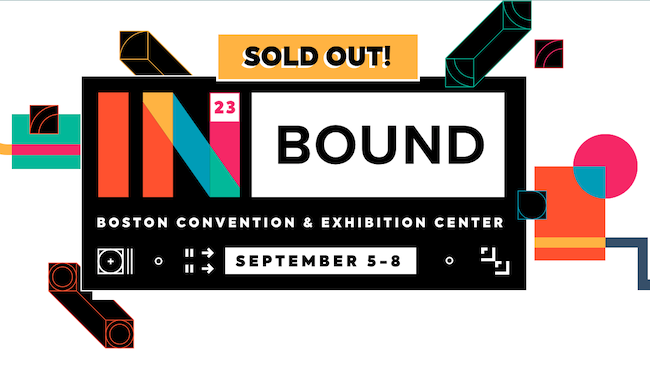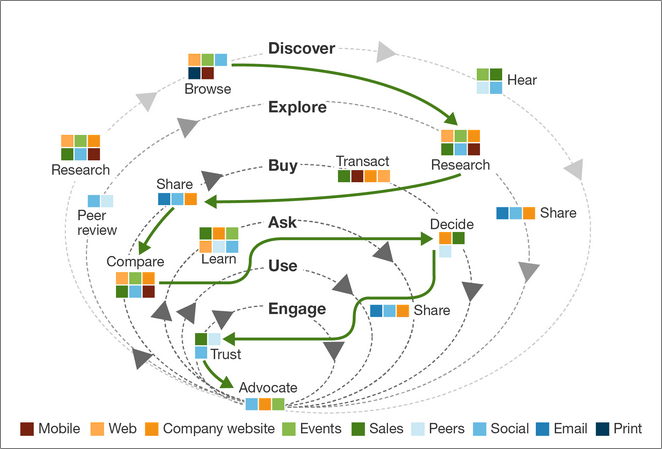B2B and Manufacturing Agenda for Inbound Conference 2023
Marketers in the B2B and manufacturing/industrial spaces could learn a lot from HubSpot’s annual marketing conference, simply called Inbound, Sept....
3 min read
![]() StoryTeller Team
:
September 11, 2015
StoryTeller Team
:
September 11, 2015
We talk to a lot of manufacturers, and what we've learned is that they're not unlike most of the marketers we work with: they're always looking for better ways to increase the number of sales leads they generate on behalf of their organization! The good news? We've got a list of 5 proven methods for manufacturing marketing. Here they are:
Researching keywords and then using them in your website content is a huge opportunity for manufacturing marketers. Those that land on your site after searching online specifically for manufacturing-related products are more likely to be looking to buy than – say – someone searching for golf courses in their area. For example, the type of person searching for something as specific as "retail point-of-purchase" displays is likely doing so because they're in the market for that specific product!
Manufacturing marketers can take advantage of keywords by creating helpful, relevant content such as blogs, splash pages, and landing pages that include phrases related to what they offer. Tools such as SearchBliss or Moz Keyword Difficulty and SERP Analysis Tool are great for discovering keywords that are relevant to your business, have a high number of monthly searches and aren't too difficult to rank for on Google.
Once you've driven people to your site through an effective keyword strategy, you can generate leads by offering offering more advanced content (eBooks, whitepapers, pricing pages) in exchange for email addresses and other contact information.
Speaking of pricing pages, what better way to allow visitors of your website to identify themselves as interested candidates than offering access to your product pricing page in exchange for their email address? Pricing pages work well for this industry because – as we've mentioned – people don't generally look at manufacturing products on websites online unless they're an interested buyer.
Not only that but the purchasing process for high-volume, B2B products isn't a cut-and-dried process the way it may be with everyday consumer items. Those in the market for manufacturing products want to know:
The fact that this information varies for most manufacturing organizations makes pricing pages valuable content for those looking to buy, and thus can be used in an exchange for prospects' contact information.
READ MORE: Manufacturing Marketing Case Study - Palmer Promotional Products
Today, 81% of manufacturing marketers use YouTube to distribute content, and they rate it as the most effective social media platform. It's no wonder that video is such a popular medium for manufacturing, because:
In other words, like we always say, video can take you somewhere, show you something, or introduce you to somebody.
When you're not using YouTube, LinkedIn is the next best thing for marketers in the manufacturing industry. As with most B2B industries, LinkedIn is the place to attract new prospects either through sharing relevant industry content or by using LinkedIn's advanced search feature.
Sharing relevant content with those in your industry is made easy using LinkedIn's "Groups" feature. LinkedIn Groups is a way for people in similar industries to connect, share content with and answer questions for one another. Upon joining a group, remember to approach your communication with the group the way you would at any other business conference – by asking questions instead of talking about yourself and helping people instead of explicitly selling. You'd be surprised how effective this can be.
LinkedIn's basic search feature is another prospecting option. It allows you to find potential buyers based on location and industry, connect with them and strike up a conversation. If you're willing to pay the extra $79.99/month to access a LinkedIn Premium account, the professional networking site allows you to sort prospects by years of experience, function, seniority level, and company size – a huge value to those in the B2B marketing space!
______________________________
Have more questions about manufacturing marketing? Don't hesitate to reach out to us.

Marketers in the B2B and manufacturing/industrial spaces could learn a lot from HubSpot’s annual marketing conference, simply called Inbound, Sept....

How do you typically make a purchasing decision? You likely go to Google, type in phrases, questions, or even specific product or service names. You...

Many manufacturers with smaller marketing departments prioritize sales support: creating sales collateral, helping with trade shows, developing...